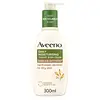What's inside
What's inside
 Key Ingredients
Key Ingredients

 Benefits
Benefits

No benefits
 Concerns
Concerns

 Ingredients Side-by-side
Ingredients Side-by-side

Water
Skin ConditioningGlycerin
HumectantDistearyldimonium Chloride
Isopropyl Palmitate
EmollientPetrolatum
EmollientCetyl Alcohol
EmollientDimethicone
EmollientAvena Sativa Kernel Flour
AbrasiveYogurt Powder
Ethylhexylglycerin
Skin ConditioningPolysorbate 60
EmulsifyingHydroxyethylcellulose
Emulsion StabilisingSodium Chloride
MaskingDisodium Phosphate
BufferingLactic Acid
BufferingSodium Phosphate
BufferingTocopherol
AntioxidantPhenoxyethanol
PreservativeParfum
MaskingBenzyl Salicylate
PerfumingBenzyl Alcohol
PerfumingLinalool
PerfumingCI 77891
Cosmetic ColorantWater, Glycerin, Distearyldimonium Chloride, Isopropyl Palmitate, Petrolatum, Cetyl Alcohol, Dimethicone, Avena Sativa Kernel Flour, Yogurt Powder, Ethylhexylglycerin, Polysorbate 60, Hydroxyethylcellulose, Sodium Chloride, Disodium Phosphate, Lactic Acid, Sodium Phosphate, Tocopherol, Phenoxyethanol, Parfum, Benzyl Salicylate, Benzyl Alcohol, Linalool, CI 77891
 Reviews
Reviews

Ingredients Explained
These ingredients are found in both products.
Ingredients higher up in an ingredient list are typically present in a larger amount.
Hydroxyethylcellulose is used to improve the texture of products. It is created from a chemical reaction involving ethylene oxide and alkali-cellulose. Cellulose is a sugar found in plant cell walls and help give plants structure.
This ingredient helps stabilize products by preventing ingredients from separating. It can also help thicken the texture of a product.
This ingredient can also be found in pill medicines to help our bodies digest other ingredients.
Learn more about HydroxyethylcelluloseIsopropyl Palmitate is a texture enhancer and emollient. It is an ester of isopropyl alcohol and palmitic acid.
Palmitates are emollients. Emollients help keep your skin soft and smooth by creating a barrier that traps moisture in.
When added to cosmetics, Isopropyl Palmitate creates a silky texture and improves spreadability.
Isopropyl Palmitate may not be fungal acne safe. It can worsen acne prone skin.
Learn more about Isopropyl PalmitatePetrolatum is more commonly known as petroleum jelly. It is created by mixing waxes and mineral oils.
This ingredient is effective at reducing water loss by 99%. This is because it is an occlusive. Occlusives create a hydrophobic barrier on the skin to prevent evaporation. This property makes it great for hydrating dry skin.
Pro tip: Use occlusives, such as this ingredient, on damp skin for the best results.
The quality or origin of petrolatum is only known when disclosed by the brand. Most cosmetic petrolatum has gone through several purification stages.
Another benefit of occlusives is it protects your skin against infection or allergies.
Petrolatum may not be safe for fungal-acne. Studies show mineral oil / petroleum leads to the growth of M. Furfur, a type of yeast.
Learn more about PetrolatumPhenoxyethanol is a preservative that has germicide, antimicrobial, and aromatic properties. Studies show that phenoxyethanol can prevent microbial growth. By itself, it has a scent that is similar to that of a rose.
It's often used in formulations along with Caprylyl Glycol to preserve the shelf life of products.
Water. It's the most common cosmetic ingredient of all. You'll usually see it at the top of ingredient lists, meaning that it makes up the largest part of the product.
So why is it so popular? Water most often acts as a solvent - this means that it helps dissolve other ingredients into the formulation.
You'll also recognize water as that liquid we all need to stay alive. If you see this, drink a glass of water. Stay hydrated!
Learn more about Water